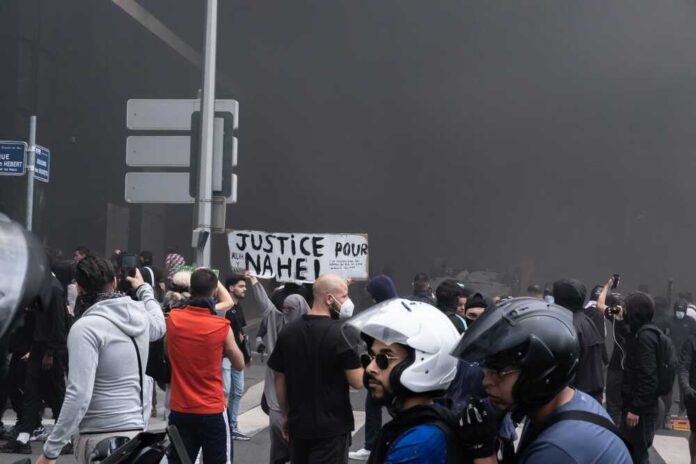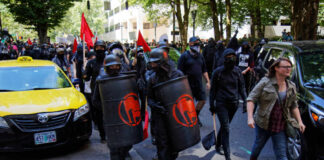
A wave of violence has surged through France, leaving the once tranquil countryside scarred by unrest. A clear departure from past disruptions mainly confined to urban areas, this nationwide upheaval calls into question the stability of one of Europe’s central pillars.
Late last week, tranquility was shattered in the serene town of Quissac, a modest community in the Gard region of Southern France. Once taken for granted, the rural peace was abruptly punctured by a hit-and-run attack against the local gendarme’s barracks. “A way of showing off,” Mayor Serge Cathala bitterly observed of the perpetrators, underscoring a new, troubling reality: France’s big-city problems are invading the quiet countryside.
The nationwide disarray, ignited by the controversial police shooting of Nahel Merzouk, a French-born teenager of North African descent, in late June, has spread far and wide. More than 500 cities, towns, and villages across France have witnessed violence and destruction. The once picturesque nation now paints a distressing image with more than 6,000 vehicles and 12,400 trash bins set ablaze and over 1,100 buildings attacked.
BREAKING
FRANCE
A 16th century Catholic Church has been burnt to the ground
The steeple of Eglise Notre Dame Drosnay can be seen collapsing on video. French churches are being destroyed every week pic.twitter.com/BlvJHURkMX
— Catholic Arena (@CatholicArena) July 7, 2023
Adding to the pandemonium, an ancient 16th-century church in Drosnay was destroyed in a devastating fire. As local law enforcement grapples to contain the wave of protests and violence, Paris police have even moved to ban protests to quell the turmoil.
This wave of protests and destruction isn’t just a hiccup—it’s a cry of national distress echoing far beyond France’s borders. While the police shooting sparked the protests, their rapid spread and intensity reveal an underlying discontent that demands urgent attention.
In 2005, a similar wave of rioting rocked France, but those disturbances were mostly limited to cities and their outskirts. This time, however, the unrest has extended its reach to include small towns and villages far removed from France’s bustling urban centers. Social networks have bridged the gap between urban and rural, echoing the unrest across the nation.
Places like the Normandy village of Rugles, the town of Yutz near France’s eastern borders with Germany and Luxembourg, and Quissac itself, which was spared from the 2005 riots, have all experienced disturbances this time.
While the French government and President Emmanuel Macron struggle with this escalation, the national crisis presents a crucial question: Can France effectively address the discontent brewing among its citizens? Macron and his administration must tackle these issues head-on, providing law and order, social cohesion and understanding.
As the French nation attempts to navigate its way out of this turmoil, the world watches anxiously. The scars left by these events are a sobering reminder that city limits or national borders don’t confine unrest and wanton violence.












